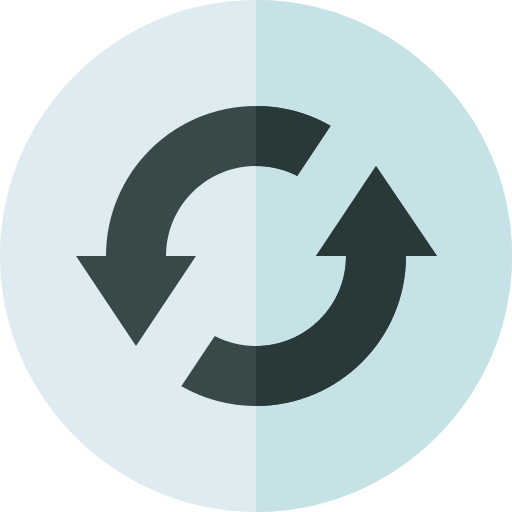Leveraging AI for Your Job Search
Does artificial intelligence control the daily activities that fill your life?
Humans benefit from AI every day through its integration with recommender systems for television shows and map-guided navigation to home provided by Google Maps.
Users of smartphones experience interactions with artificial intelligence systems in daily life. The time has come to use this technology properly to advance your professional opportunities.
Looking for your dream job?
This article examines how Loopcv alongside AI-powered tools develops your job application journey. With these techniques you will learn to operate a job search that delivers maximum impact while also ensuring targeted efficiency to decrease both search time and missed chances.
Understanding Artificial Intelligence in the Job Market
Do you maintain the traditional method is optimal?
Many individuals think resorting to AI tools represents dishonest work but is it actually unsavory or just a theoretically advanced approach? But is it really?
Improving your job search these days requires smarter operational methods and the creation of highly effective resumes. Since many job opportunities are available it would benefit the search process to simplify the workflow while concentrating on essential aspects.
To discover your perfect job opportunity you must use a system that fixes the noise disorder while eliminating inferior workplace possibilities. The technology of AI-powered tools, specifically Loopcv serves this purpose.
Here’s how AI can transform your job search:
- Utilize AI-supported recruiting software to locate positions that match both your skill set and professional goals.
- The system cuts down application workloads through automation which search-jobs without human intervention.
- Employer-intentional resume optimization through AI ensures your document will attract both recruiter attention and pass ATS detection checks.
- When tracking job postings you can observe direct engagement between employers and your job application records.
- Eliminate time-wasting pointless opportunities so you can focus on roles which align perfectly with your professional objectives.
- To succeed in today's hyperactive job market, adopt tools that recruiters and employers currently use.
Here’s something you might not have considered:
Current recruitment practices include artificial-intelligence-driven systems for seeking job candidates while performing screening procedures and making selection decisions. Your chances of headhunting will increase if you enhance your approach.
Your job search will benefit greatly from Loopcv because it allows AI processing to guide your opportunities while reducing your search duration and securing qualified positions. Every tool should be deployed by professionals aiming to reach their career goals.
Building an AI-Optimized Resume With Loopcv
Current job market competition forces many companies to use applicant tracking systems (ATS) that filter resumes through keyword searches. Your resume stands at risk of being ignored by ATS because it lacks specific keywords that are essential for screening.
The automation tools from Loopcv enable you to combat keyword challenges while simplifying your job application process across multiple opportunities.
How to Stand Out in the Applicant Tracking Systems:
- Grammatical Precision: All modern employment applications need to follow perfect grammatical standards. Grammarly together with other similar programs ensures your resume stays clear of errors.
- Tailored Resumes: Fitting your resume content for each job and adding specific keywords appearing in each application description becomes one of your resume improvement strategies. Your application stands better chances to clear the first ATS screening phase.
- Quantify Achievements: Quantify your achievements through numbers which produces a stronger impact on your resume along with better understanding by hiring managers.
- Simple Formatting: Your resume requires a straightforward minimalist design to ensure ATS software correctly understands the information.
Applications processed through Loopcv's automation tools help people make optimized and tailored application submissions efficiently. The integration of AI functions within Loopcv ensures your job search performs better which raises the likelihood of finding your ideal position.
Using AI to Find a Job
There are a lot of AI-powered platforms for job seekers.
Examples include:
- Loopcv
- Indeed
- Glassdoor
These platforms recommend jobs for you based on your previous activity and keywords in your resume.
For example, you want a job as a customer representative for an Amazon outsourcing customer service company. Such companies look for outstanding people and problem-solving skills.
You would, naturally, use those terms when searching. You might also apply for suitable posts. The AI would then remember this and make recommendations for similar jobs. It would also look for jobs that might be a match for your skills and alert you accordingly.
You can get the best results by being specific about what you want. Personalize your search using filters and punch in as much information as possible. Do you work in a niche industry? Look at a platform catering to that industry. For example, Turing for tech roles.
How to Improve Your Online Presence with AI?
Want to look good to potential employers? You can bet they’ll Google you the first chance they get, so take some time to work on your online presence.
Optimize Your LinkedIn Profile
This social media site is one of the first places most people will look. You need to have a polished profile to make an impact. Start with a compelling headline that grabs attention. Think of it like an elevator pitch and make it short and punchy. What are your best selling points?
Then, follow through with a concise, engaging summary. Here, you’ll explain more about your skills, achievements, and aspirations.
You can use a tool like LinkedIn Profile Optimization here. It’ll analyze your profile and make suggestions to improve:
- Keywords
- Formatting
- Content
These tips help your profile rank higher within searches.
Social Media Analysis Tools
Do you post everything about your life on Instagram? That’s not always the best way to impress a potential employer. They’ll check your social media pages to get an idea about how professional you are. If you’re slagging off your current boss or acting irresponsibly, it could cost you the job.
AI tools like SocialBee audit your accounts. They look for inappropriate content and suggest improvements. They’ll also make sure your profiles are consistent across several platforms.
A clean, well-curated online presence reassures employers that you’re credible and an asset.
Personal Branding AI Tools
Don’t stop with LinkedIn; consider creating a professional portfolio or personal website online. You can use AI-powered tools like Squarespace and Canva to make these pages pop.
You’ll not only have a central reference point for recruiters, you’ll also demonstrate your professionalism.
Networking and AI
Sometimes, it’s not about what you know but who you know. LinkedIn and Shape have valuable tools that recommend connections. You can then reach out to these people and try to strike up a conversation.
It doesn’t have to only be potential bosses. Reach out to industry influencers, mentors, or peers. You never know who might be in a position to help you.
Worried about how you’ll come across?
You can use a tool like ChatGPT to write a compelling introduction letter. Just be careful, though. Read it to make sure it rings true before you send it out. Also, don’t spam hundreds of people because this tool makes it easy to do so. You want to make useful connections to develop meaningful relationships.
Personalizing Your Job Search Journey with AI
Your career choice future remains unclear to you right now? Not all paths become clear but you don't need to navigate your choices by yourself.
You need to reach lead educator positions because you want higher pay. With Loopcv:
- Job descriptions combined with industry trend analysis allows you to understand what employers seek in their candidates.
- The system delivers customized suggestions including specific training programs besides professional development events which help boost your professional profile.
- Your training and career trajectory needs a realistic framework generated through artificial intelligence tools which helps you set achievable timelines.
- To maintain your direction you should divide large goals into small segments while you set precise dates to meet every objective.
Why are deadlines so important?
Your goals remain nothing more than dreams when you lack the appropriate targeting. Hazarding a cross-country journey through the country without a clear route is equivalent to driving west without planning.
Prior to starting your journey you would determine the necessities like your path and fuel amounts then figure out where to rest. An organized job search plan shows candidates their destination and the exact path to follow.
The change of plans happens when you perform goal evaluation. No problem. The Loopcv platform lets you quickly assess your performance against your goals while making strategic adjustments to keep you on track.
With Loopcv you gain the power to design your career path using essential tools for workplace success. You can now customize your job search while actively moving toward your professional ambitions.
Ethical Considerations and Challenges in AI-Powered Job Searching
Artificial intelligence job search operations present both ethical dilemmas and operational difficulties to candidates. Using AI in your job search helps you secure your dream position yet understanding system risks and remaining accountable remains crucial.
Recruitment systems can unintentionally develop biased criteria which poses a significant problem. Job seekers have no power to influence how job screening systems operate yet strong resume adjustments increase their overall success rate.
Each application becomes more successful in AI screening tools because you specifically customize your resume for every position.
Being ethical when communicating with recruiting employers remains fundamental to obtain employment opportunities. The ability of AI tools to enhance or reshape resumes creates an intensive pressure to increase the information on your professional history.
But remember: Taking that undesired job position because you lack the essential skills will create future complications. Pop culture advertising sometimes promotes "fake it till you make it" but this practice rarely works well in reality.
Your goal should be to locate employment that matches your existing skills and actual work history. Use AI tools to:
- Completely maximize your resume content using factual descriptions of your abilities.
- Scan the employment market for positions that match your existing skills and future aspirations.
- Update your online profiles by providing honest professional information which represents you accurately in the online world.
Conclusion
The power of Artificial Intelligence enables dramatic changes throughout your job search activity by displaying customized job listings and assisting your career judgment. The technology assists recruitment but standard practice still needs honest self-evaluation.
Your chances of landing an excellent position combined with enhanced job performance increase when your resume and online profile accurately shows your abilities!



